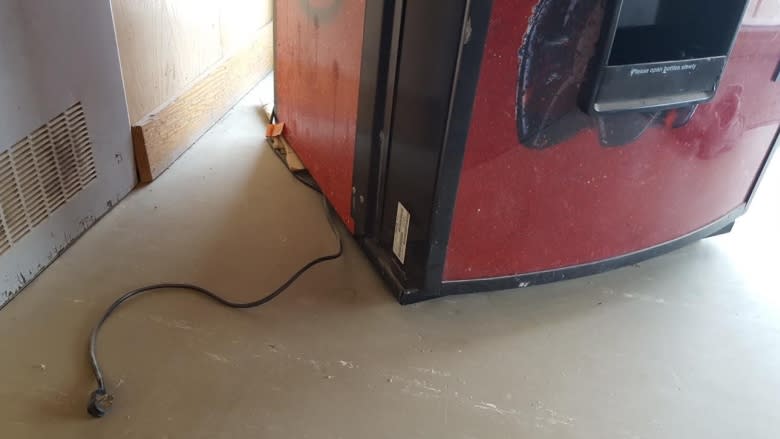Town of 84 people unplugs pop machine, saves $9K a year
When the chief of Jean Marie River found out how much the band's pop machines were costing them in electricity, she promptly walked over and pulled the plug.
The tiny Northwest Territories community of 84 people had an energy audit performed on six government buildings to find out how they're using their energy and where they can conserve it.
Two vending machines were among the biggest culprits, and Chief Gladys Norwegian says band members weren't even using them.
"It was egregiously high per day," Norwegian said. "It was phenomenal."
The Arctic Energy Alliance used a kilowatt meter to track one machine's electricity usage. On average, just to light the machine and keep the pop cold, it cost:
- $1.03/hour
- $24.90/day
- $174/week
- $747/month
That amounted to more than $9,000 a year.
"It's on all the time," Teresa Chilkowich said of the machine. She's the Dehcho energy project coordinator for the Arctic Energy Alliance and helped with the town's audit.
"When you have something on 24 hours a day, that's massive."
2nd highest rates in N.W.T.
Jean Marie River is one of many communities in the N.W.T. that relies on expensive diesel power. Its rates are among the territory's highest — second only to Nahanni Butte.
Businesses and governments pay even more in order to keep residential rates low.
To put it in perspective, Jean Marie River currently pays $2.58 per kilowatt hour for power in those bigger buildings, compared to Fort Providence — another diesel community — which pays $0.63.
"It's quite an elaborate system," Chilkowich explains, referring to a complex formula that helps the Public Utilities Board set varying power rates for communities from Hay River, with easy highway access to Alberta, to Sachs Harbour, which depends on an annual resupply by barge to get its diesel fuel.
Population is also a factor.
"If there's only so many people in a community, then they're trying to keep the residential rates reasonable and not outrageous."
Upgrade your fridge
Aside from the shock of the pop machine, Jean Marie River also learned that its water treatment plant is the most expensive building in the community to power — Norwegian says it racks up an $18,000 electricity bill each month.
Chilkowich says the equipment running in the plant could be to blame, such as electric heaters.
When it comes to energy suckers, Chilkowich points to incandescent light bulbs as one of the biggest offenders.
"Anything that is involving heat are your big things," she said.
"Toasters, block heaters that are being plugged in all through the night instead of having a block heater timer on your vehicle — very big. Coffee makers, water coolers that have a heater function."
Old appliances can also add up.
Chilkowich said anyone with a refrigerator over 10 years old should consider an upgrade. She said a 2004 model of a high efficiency fridge costs about $82 a year in electricity; while a 1984 model more than triples that cost, at $291.
Making a difference
Chief Norwegian says seeing the energy costs broken down in the audit was "unbelievable."
"From there we had a good idea that we needed to take some measures to be more energy efficient."
And the small community has.
It's installed smart meters to monitor energy costs, as well as programmable thermostats in houses and the band office. Community members were also asked to open up their homes to be winterized — putting plastic on windows, cleaning out behind fridges and furnaces. Norwegian says most townspeople also signed up for home energy audits.
"People in the community need to be on board," she said. "We cannot just say 'we need to be more energy efficient' and leave it up to them."
The band office now has working solar panels on its roof, and Norwegian says the band has submitted a proposal to install panels on the water treatment plant in August — just doing its part, she says, to make a difference.
And, after discussion, the band also decided to unplug the second pop machine.



